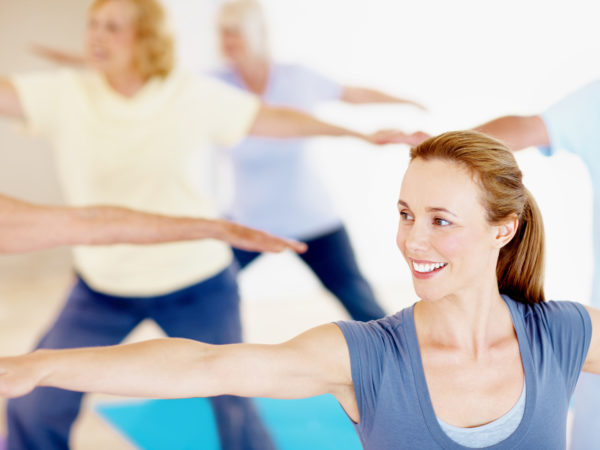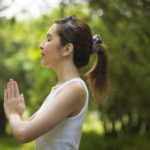Osteoporosis and Pilates

By Rebekah Rotstein
As baby boomers segue from child-rearing to retirement, they find themselves bombarded by the media with information about osteoporosis. It makes sense, considering that more than 44 million American men and women age 50 and older have osteoporosis or its precursor, osteopenia. So between news articles about calcium and vitamin D, Sally Field promoting the drug Boniva on TV commercials and the now-ubiquitous term “weight-bearing exercise,” we are all hearing a great deal about this epidemic.
Yet controversy abounds, with new findings questioning the benefits of calcium as well as the risks versus benefits of osteoporosis medications. The conflicting information is enough to overwhelm even the most media-savvy consumer. But the one continuously advocated method of addressing the condition is exercise. Not only does exercise help to maintain and build strong bones, but it can improve balance and reflexes and thereby prevent falls, the most dangerous threat to those with fragile bones. According to the International Osteoporosis Foundation, 60 percent of those who fracture a hip still cannot walk independently a year later. Clearly, the goal should be to stay strong, agile and upright.
As Pilates has gained recognition in the medical and mainstream realms as a beneficial form of exercise to address every concern from back pain to love-handles, boomers have jumped on the bandwagon. Specifically, many have heard that Pilates can be a great bone-strengthening addition to a fitness regimen. But beware – traditional Pilates, especially when done in a mat class (on the floor) involves an excess of motion for the spine that can actually INDUCE spinal fractures. In fact, 75 percent of Pilates mat exercises are contraindicated – advised AGAINST – for those with osteoporosis and osteopenia. Why is that? A 1984 Mayo Clinic study determined that flexing the spine (forward bending) can result in vertebral fractures, the type that lead to loss of height and eventually even to a “dowager’s hump.” Those who have taken a Pilates class know that most of the exercises involve lifting your head off the ground while lying on your back and rolling up and down.
So why would people recommend Pilates? One emphasis within Pilates is the alignment of the body – elongating the spine and aligning it with the pelvis, hips, legs, feet, shoulders and head. What better way to combat slouching than to focus on posture and spinal decompression? Additionally, breathing and concentration are pivotal to every exercise. If you are more “grounded” and centered in your mind, your body will respond accordingly and you may even be less likely to trip. Furthermore, balance and control play a large role in the Pilates repertoire, regardless of whether you are on the mat or using the machines. Pilates is a whole-body experience and promotes symmetry of the musculature along with proper body mechanics. Along those lines, all exercises emphasize “the core” – the deep stabilizing muscles of the lower back and pelvis, including the deepest layer of abdominals. When those are strong and can support the body, there is less effort to maintain an upright (or non-upright) position and also less risk of falling.
So should you avoid Pilates if you have osteoporosis or osteopenia? Certainly not. But you may be best to attend a mat class that is geared toward those with the condition. At least, avoid the rolling exercises or ones that involve front or side bending and rotation of the spine. Also, while lying on your back, keep your head on the ground, perhaps with a small towel underneath, when others are lifting their heads off the mat.
On the positive side, all exercises done lying on your side or stomach, as well as on hands and knees, are excellent to do. Just inform the instructor before class of your situation. Additionally, private Pilates sessions are outstanding for those with osteoporosis and osteopenia for the reasons mentioned above as well for the increase in flexibility. We simply need to be aware of necessary modifications to this popular exercise form. The benefits of Pilates are numerous and great – let’s just be sure to stick to safe movement.
Pilates instructor Rebekah Rotstein is the founder of Buff Bones a movement system for fit bones.









